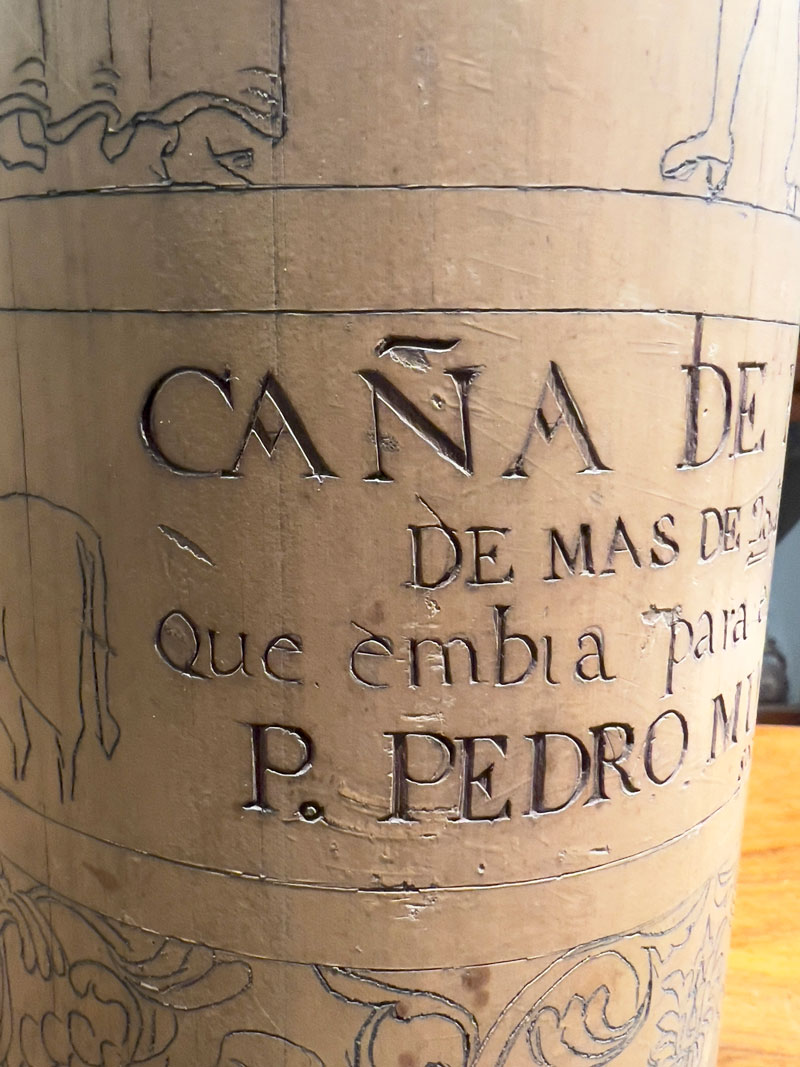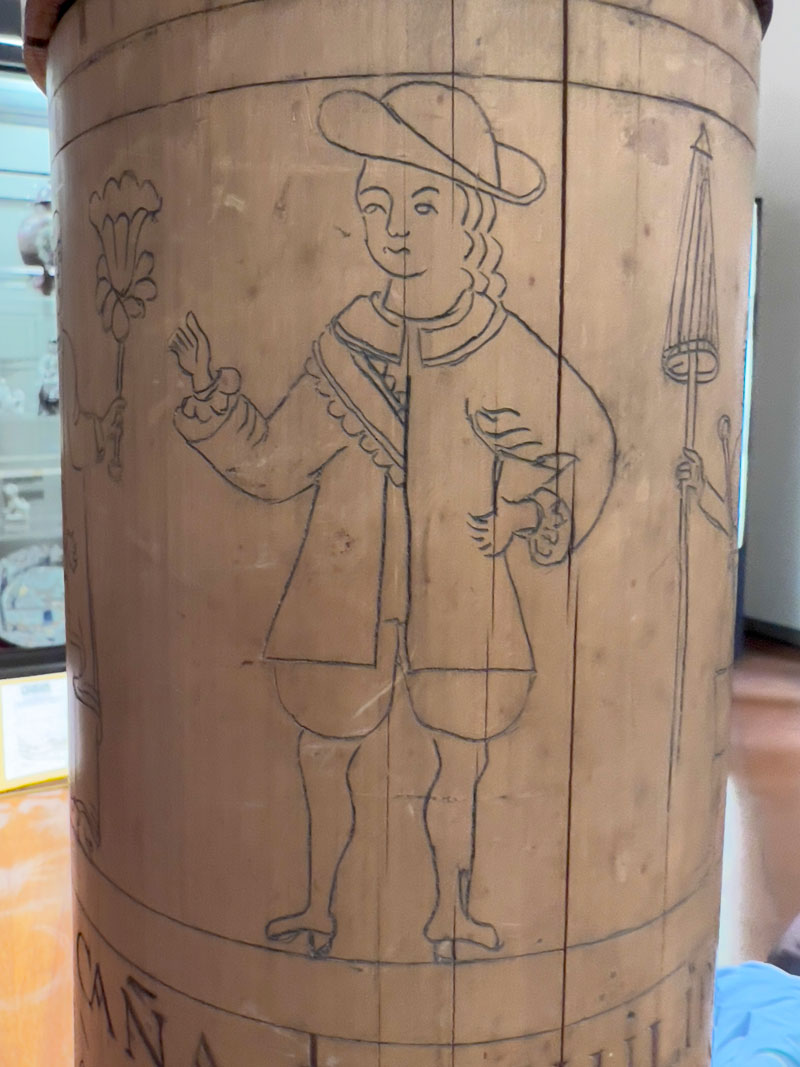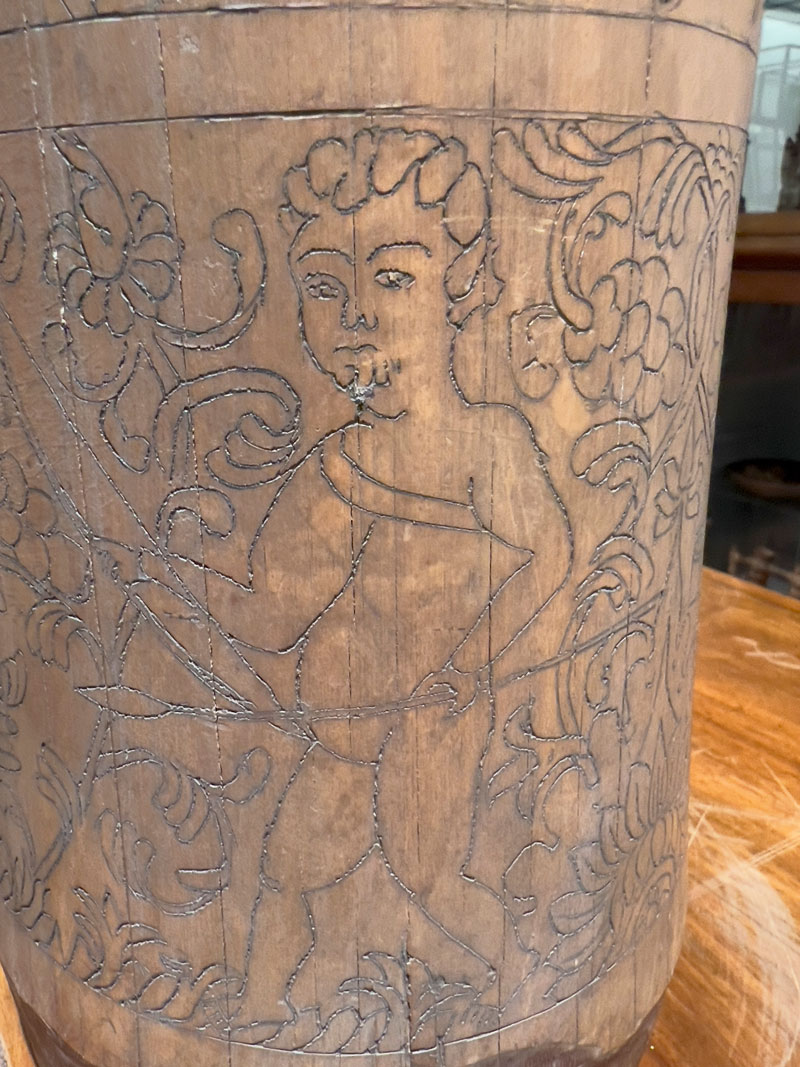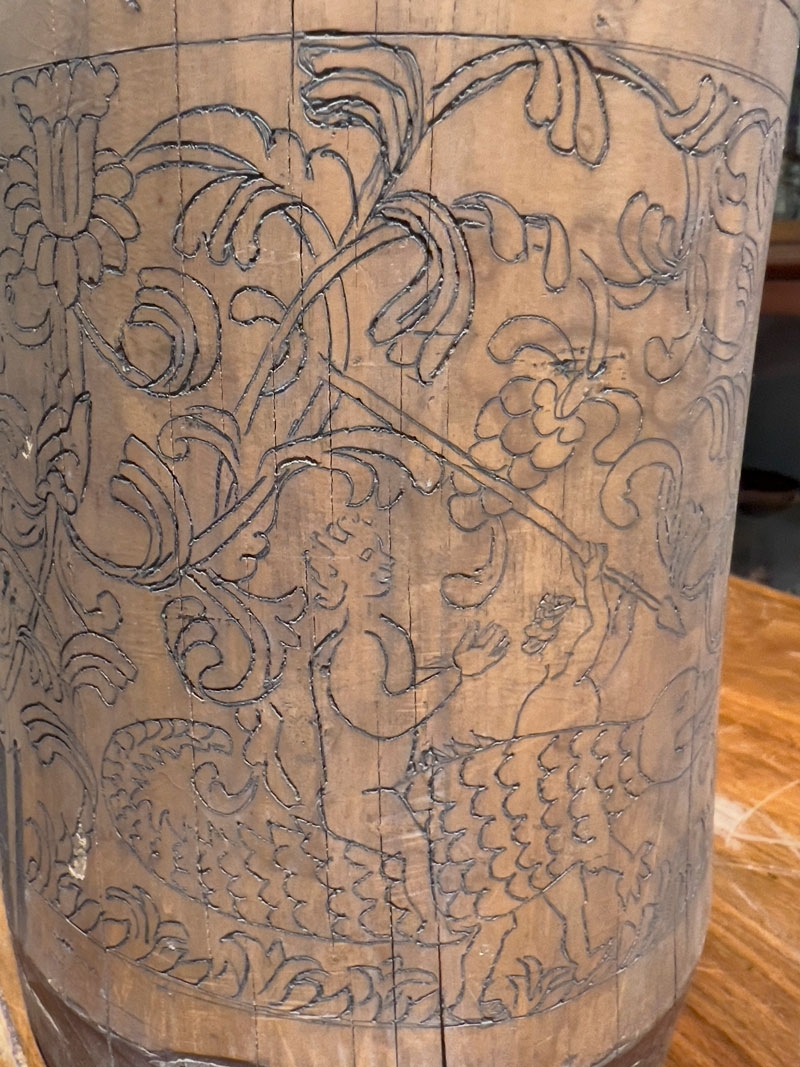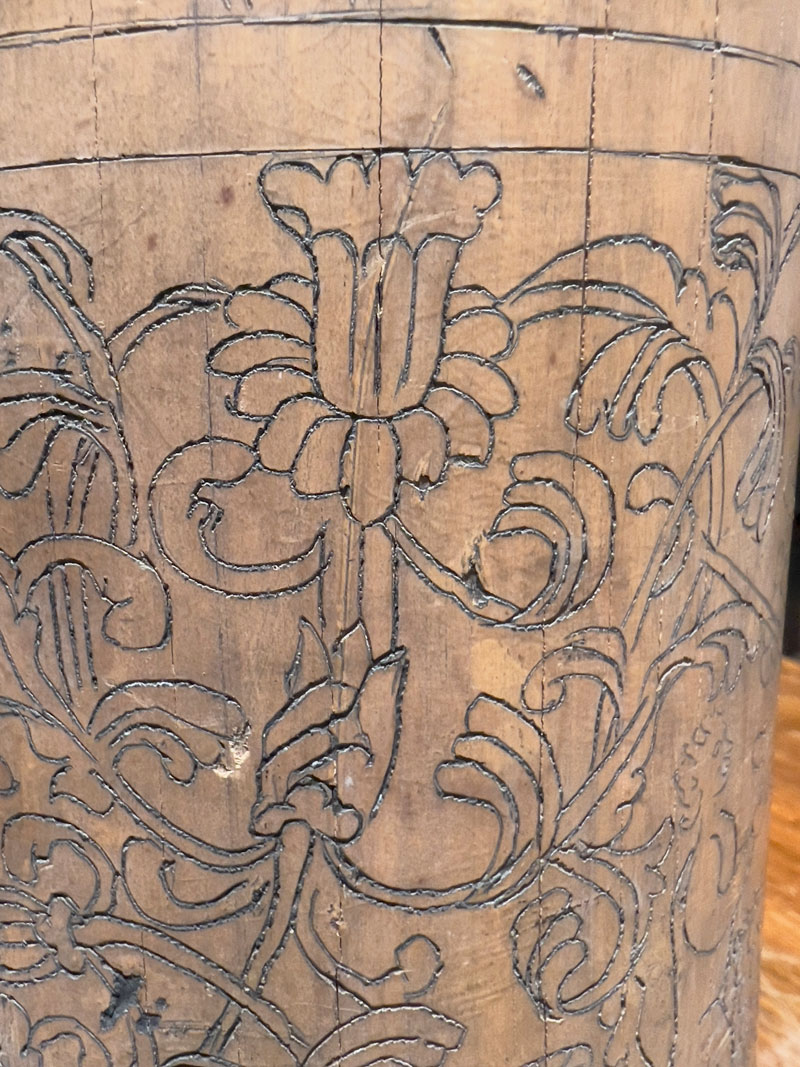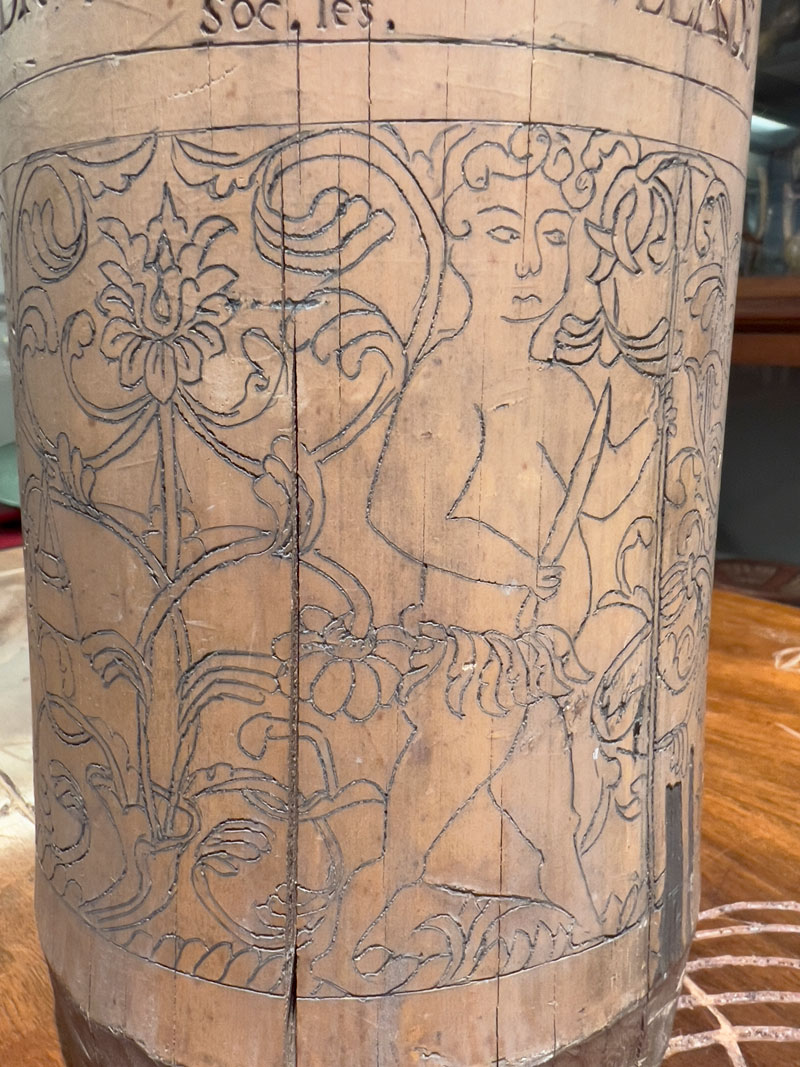Introducing Murillo Velarde's Philippine Bamboo in Bologna
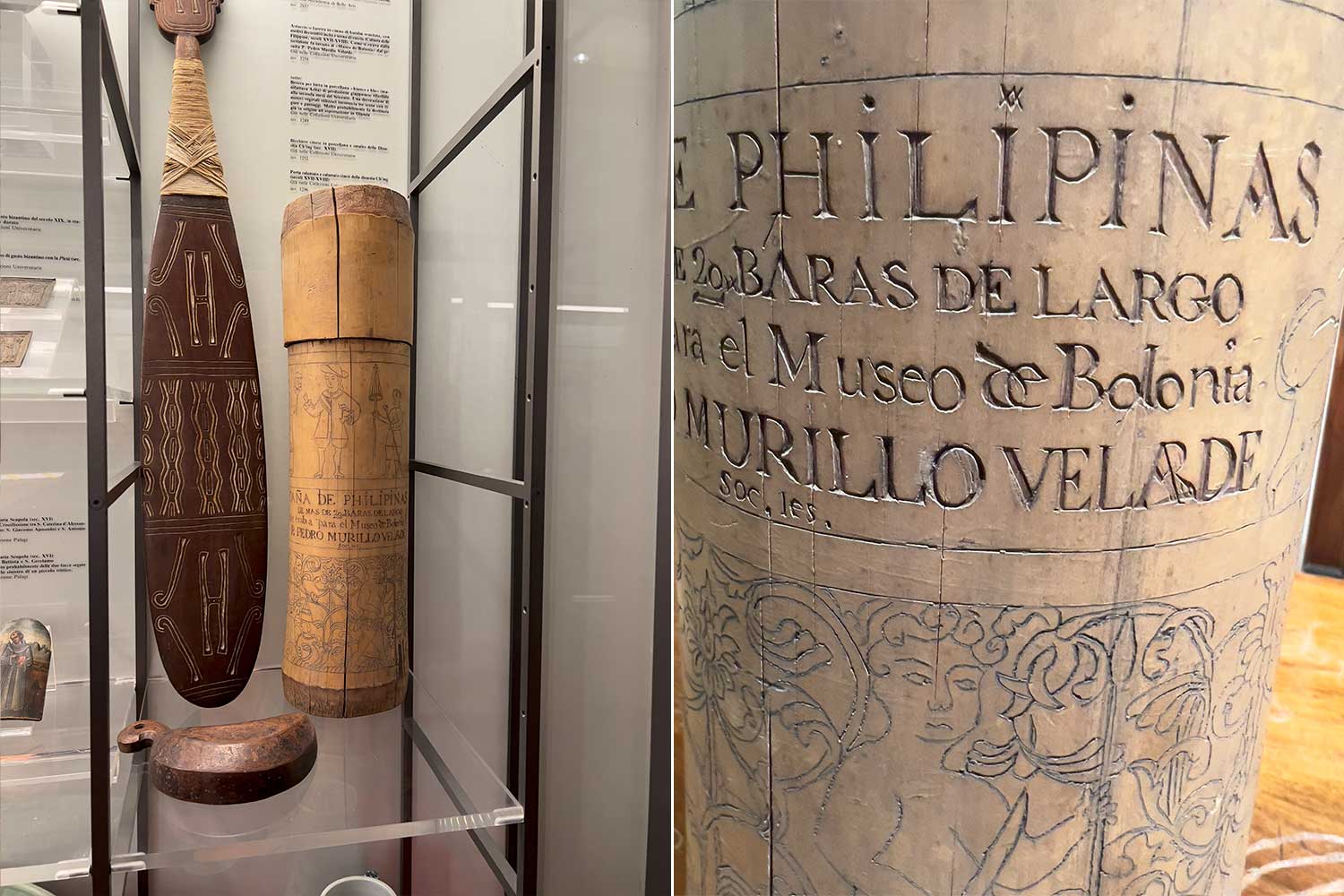
In a nondescript corner of the Museo Civico Medievale in Bologna stands an extraordinary bamboo tube. As can be seen from the inscription, the bamboo tube was sent or shipped by the Jesuit P. Pedro Murillo Velarde (1696-1753) to the "Museo de Bolonia" “sometime in the mid-18th century. This museum was most likely, the University Museum of the Academy of Sciences at the Institute of Bologna at Palacio Poggi, established in 1711 by Ferdinando Marsigli. The University Museum was meant to create an encyclopedic collection of (among other things) natural specimens from all over the world. Inferred from the written inscription, Murillo Velarde seems to have sent the "caña de Philipinas" as a specimen of the giant bamboo species found in the Philippines.
CAÑA DE PHILIPINAS DE MAS DE 20 BARAS DE LARGO QUE EMBIA PARA EL MUSEO DE BOLONIA P. PEDRO MURILLO VELARDE SOC.JES.
[Bamboo] cane/stalk from the Philippines, more than 20 varas long, which Padre Pedro Murillo Velarde of the Society of Jesus sends to the Museum of Bologna.
(note:embiar, an obsolete spelling for enviar, means to send or to ship)
That Murillo Velarde had it inscribed and engraved with characters and motifs reminiscent of the figures seen on the Carta Hydrographica y Chorographica de las Yslas Filipinas is intriguing. Were the motifs around the text an afterthought? And could this bamboo tube be one of Nicolas de la Cruz Bagay’s non-cartographic handiwork? Or a Francisco Suarez? Was it used as a container for maps?
When, how, and why P. Pedro Murillo sent this bamboo tube to Bologna raises a ton of interesting questions. 1
Provenance
Was the bamboo tube hand carried by P. Murillo Velarde to Europe? And why was it sent to Bologna?
We know that just three years before his death in 1753, P. Murillo Velarde who had already spent 28 years in various parts of the Philippines, was sent to Europe as the Society of Jesus’ provincial representative from the Philippines before the Court of Madrid and Rome.2
From the minutes of the XVII General Congregation of the Society of Jesus which was celebrated in the year 1751, we have some indication that Murillo Velarde had an audience with Pope Benedict the 14th in Rome. There is no record of the conversations between the two men - but we know that Murillo Velarde presented a case for greater support of the mission work in the Philippines. 3 We also know that the Pope admired Murillo Velarde's work on canon law in the Indies. The Pope, a native of Bologna, was from the prominent Lambertini family and was well known for his efforts to encourage humanistic education, especially in his beloved city where the oldest university in the West was establsihed. The Pope himself donated several objects to the University Museum - many of which have joined the older collections of Ulisse Aldrovandi (11 September 1522 – 4 May 1605) and Marchese Ferdinando Cospi (1606 - 1686) and their "cabinet of curiosities" of natural specimens.
So did Murillo Velarde send the bamboo tube to Bologna from Rome as a way to ingratiate himself to the Pope by aligning himself with the Pope’s obsessions?
Or did Murillo himself do a side trip to Bologna during his European sojourn? From a reading of Murillo Vellarde's Geographia historica, de Francia, Italia, there is evidence that Murillo was in fact in Bologna.4
In his narrative, Murillo Velarde recounts his excitement about being in the famous city - including various details about the close connection the city had with the Jesuits. He gives details about seeing the preserved apartment where Saint Francis Xavier stayed, and how he had the opportunity to say Mass in the Chapel on Saint Jerome's Day. Muriilo Velarde also mentions seeing the Colegio de San Clemente where San Ignacio de Loyola stayed. 4
He also specifically mentions the University Museum - although he does not say that he donated an object to it. In his first person narrative, he talks of the spacious building of the Institute and that its museum "is the most exquisite and complete Museum that the world has." 5
Of the University museum, Murillo talks of its collection of stones, metals, fish, animals, trees, plants, fruits, and other things, "a Treasury, to enrich the Natural History." He talks about the various curiosities seen in bulk, monstrosities and curiosities that would still be read in Ulysses. He also mentions Aldrovandi's collection- and how objects came from "all over Europe, Asia, Africa, and America. 6
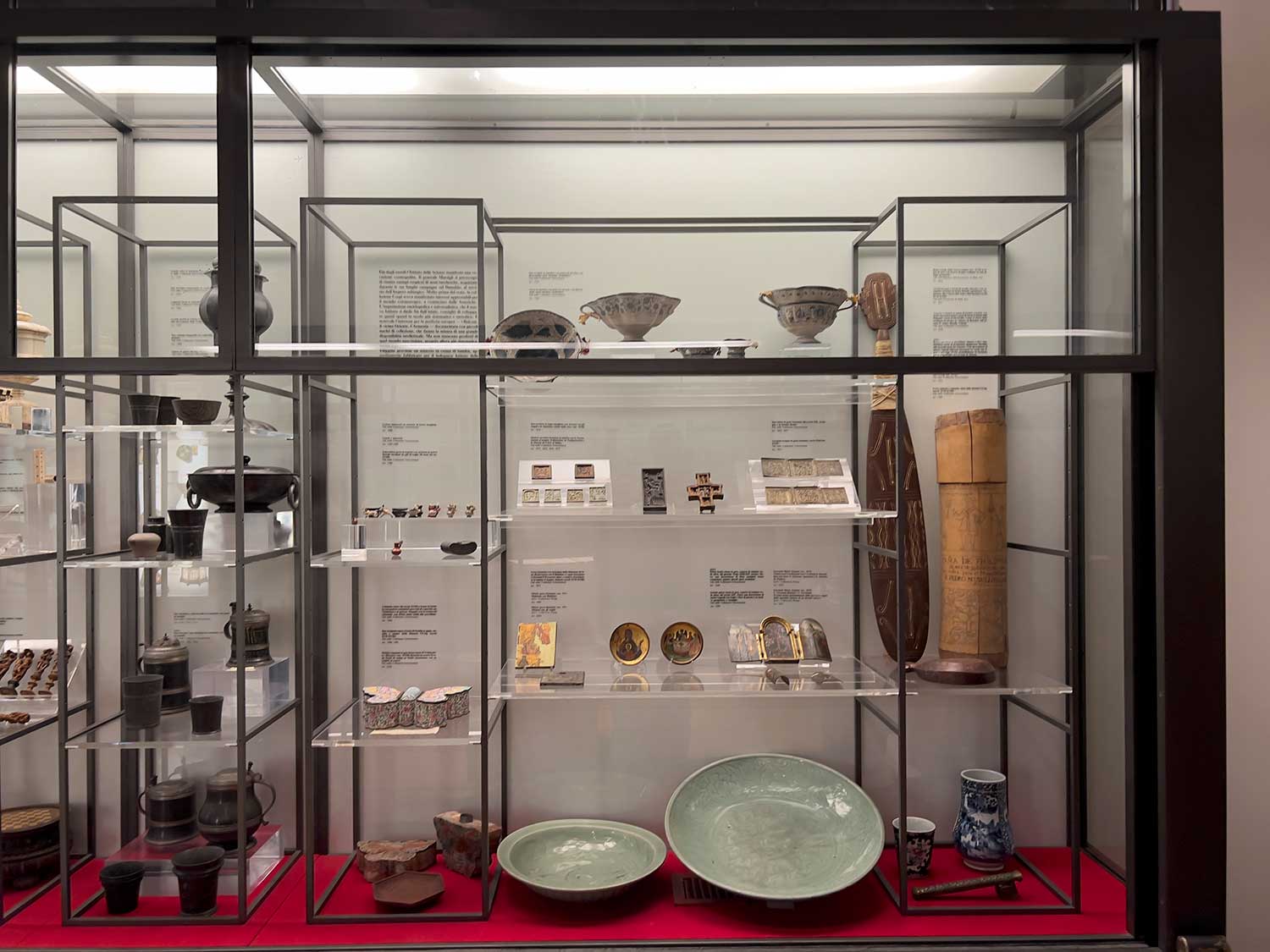
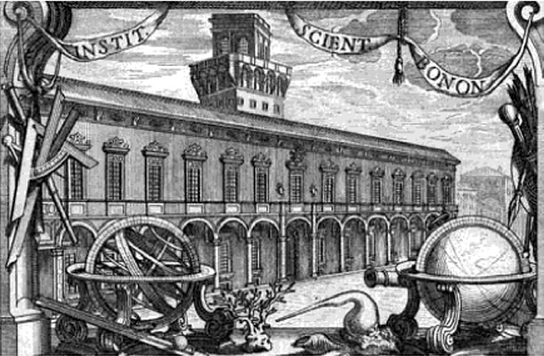
Interestingly, Aldrovandi's 16th-century collection features a large carved bamboo cylinder (now in an exhibit of Aldrovandi's collection at Palacio Poggi) but the labels do not indicate where this 17th century bamboo came from. Could Murillo Velarde have seen this unnamed bamboo specimen and then sent his own clearly inscribed exemplar after his visit to the Museum? Did he bring a spare bamboo container to Madrid (for his maps?) and after his Bologna visit, decide to send it to Bologna?
Now we know that Murillo Velarde would not make it back to the Philippines. While he was preparing to go back in 1753, he suffered from some type of mental illness (melancholia according to texts quoted by Luis Díaz De La Guardia Y López in Datos para una biografía del jurista Pedro Murillo Velarde y Bravo) and he "falls off" a building in the port of Santa María — currently a province of Cádiz in Spain. Murillo Vellarde eventually died at a Hospice on November 30, 1753.7
His trusted companion, P. Bernardo Pazuengos (rector of San Ildefonso in the Philippines and his co-procurator in representing the Philippines in the Courts of Madrid and Rome) eventually went back to Manila via Mexico. Several years later, all the Jesuits were expelled from the Philippines in 1768 - and once again, Bologna became the place of exile for the Castilian Jesuits for a number of years.8
Whether the bamboo tube was sent or shipped from Rome or Madrid or simply given or donated to the Museo directly is unclear. But the interconnections between the indeterminate Bolognese Pope (he would later, near his death, issue an out-of-character decree for the expulsion of the Jesuits from their missions), the brilliant but depressed friar and bustling University city of Bologna and its historical and intellectual links to the Jesuits -- are all told in the singular presence of this Philippine bamboo tube in Bologna. How it got to the Museo Civico Medievale is another story.9
The Bamboo Tube as Material
Measuring a total height of 55.5 cm and a width of 13.5 cm - the cylindrical hollow container is bamboo topped by a specifically sized bamboo lid ( diameter of 14 cm). The Museum's catalog describes it as either a quiver (unlikely because of its size and weight and absence of a carrying strap) or a container.
The Museum's catalog description is here. And thanks to their current digitization efforts, the bamboo tube, which has been on display at the Museo since 1985, can now be accessed online.)
There are various characters --some Europeans, an umbrella-carrying Laskar (?), a "naturales." a Sangley etc.)-- and some animals and stylized floral motifs inscribed around the circumference of the tube. These inscriptions are shallow and could have been done with a wood-burning tool or incised with black material like soot rubbed in.
In between the incised motifs and characters is a band of deeply cut text inscriptions - made with a wider, triangular tip often used for cutting letters on marble or stone. The incised letters follow orthographic conventions like accent marks and ligatures for some letters (e.g de) The abbreviated phrase of Society of Jesus seems to be done with the same tool and lighter hand similar to the motifs in the upper and lower bands.
For a 300-year-old bamboo tube, the material condition is very good. There are, however, a few cracks and the material seems dry and a bit brittle. As indicated from Murillo Velarde's inscription, the bamboo is cut from a much longer species- that can get to be as tall as 20 varas long or approximately 53 feet. (a unit of length in Spanish varying from about 32 inches (81 centimeters) to about 43 inches (109 centimeters).
Again, there are many questions to be asked about the material. Was the text inscription done in Europe? (this might explain why the tool used for the text is significantly different from the motifs).
Footnotes:
1 forthcoming papers to try to answer these questions coming soon from Dr Caroline Pagnussi, Capodimonte Postdoctoral Curatorial Fellow at the Museo e Real Bosco di Capodimonte. - and was the one who alerted me to the Bamboo tube ( via the Mapping Philippine Material Culture Project, Prof Davide Domenici from the Dipartimento di Storia Culture Civiltà Università di Bologna, and Dr Matteo Lazzari from the University of Naples "Federico II" / Università di Napoli Federico II, Dipartimento di Studi Umanistici.)
2Luis Díaz De La Guardia Y López. Datos para una biografía del jurista Pedro Murillo Velarde y Bravo. Espacio, Tiempo y Forma, Serie IV, H.' Moderna, t. 14, 2001, págs. 446. Also see H. de la Costa, The Jesuits in the Philippines - 1381-1768. Cambridge Mass, 1961, p. 691.
3 In the second session of the Congregation XXIV it is passed to vote on who would be the attorneys in Madrid and Rome. Murillo and Pazuengos are appointed: Murillo Velarde as first Provincial Attorney before the Courts of Madrid and Rome. Both men arrived in Europe in 1751. from Luis Díaz De La Guardia Y López (2001) p. 446
4Pedro Murillo Vellarde. Geographia historica, de Francia, Italia, y sus islas: con el catalogo de los Pontifices, y Antipapas, y de varios Reyes : tomo III, Volumen 3. Jan 1752 · en la oficina de D. Gabriel Ramirez pp. 226
5 Ibid p. 228
6 Ibid p. 228
7Luis Díaz De La Guardia Y López. Datos para una biografía del jurista Pedro Murillo Velarde y Bravo. Espacio, Tiempo y Forma, Serie IV, H.' Moderna, t. 14, 2001, p. 447
8 Burson, Jeffrey D., editor. The Jesuit suppression in global context : causes, events, and consequences. New York : Cambridge University Press. 2015.
9 Caroline Pagnussi is coming out with an article analyzing the various early collections, mergers and distribution flows of the dispersed University collection. We will link to her article here when it comes out.
